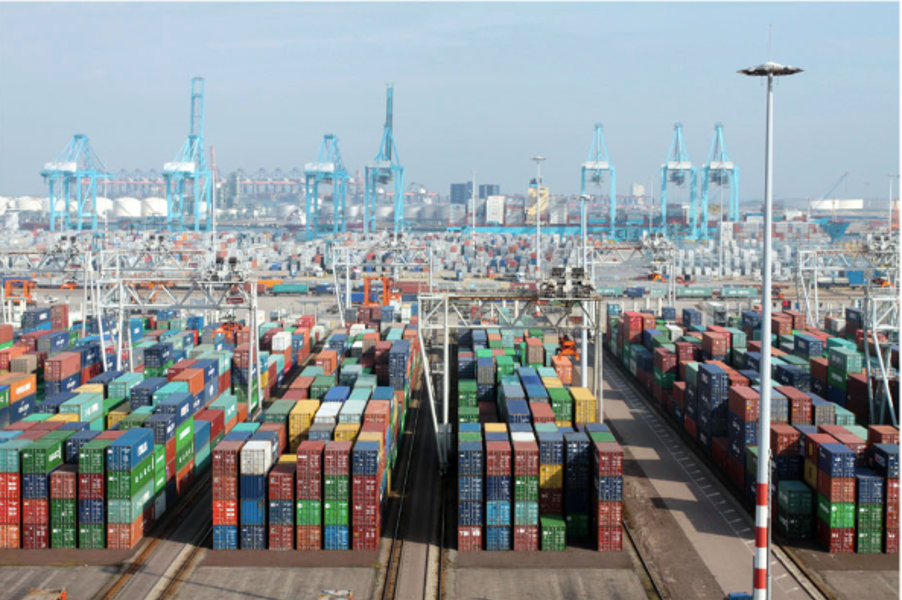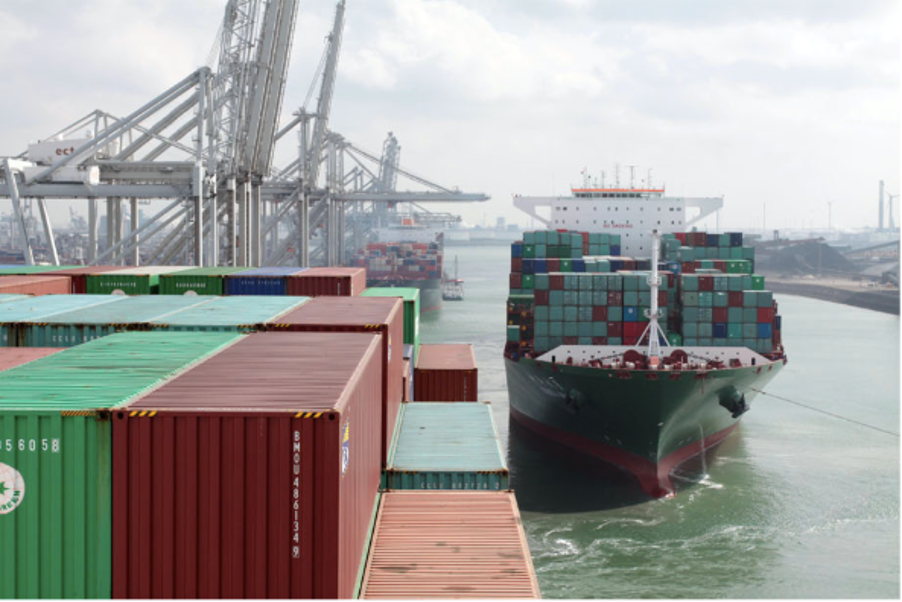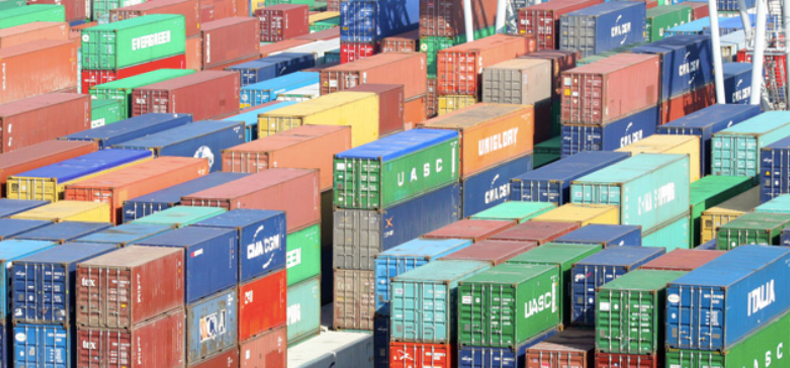Containers carry a vast array of different goods, from consumer goods such as shoes and electronic devices, to chemicals and other raw materials. The largest container ships can carry more than 20,000 containers.
UNCTAD estimates that 752.2 million 20-foot equivalent units (TEUs) were moved at container ports worldwide in 2017. Containerized trade accounted for 17.1% of total seaborne trade in 2017.
IMO has developed and adopted a number of requirements to ensure the safe carriage of containers and has also developed specific guidance for packing and securing of containers.
IMO’s International Convention for the Safety of Life at Sea (SOLAS) includes, in its chapter VI on carriage of cargoes, requirements for stowage and securing of cargo or cargo units (such as containers).
The International Convention for Safe Containers (CSC) provides test procedures and related strength requirements for containers.
The International Maritime Dangerous Goods (IMDG) Code is a mandatory international code for the maritime transport of dangerous goods in packaged form, in order to enhance and harmonize the safe carriage of dangerous goods and to prevent pollution to the environment. The Code sets out in detail the requirements applicable to each individual substance, material or article, covering matters such as packing, container traffic and stowage, with particular reference to the segregation of incompatible substances.
What work has IMO undertaken to prevent loss of containers or problems with containers?
The most recent new regulation is the requirement to verify the gross mass of a packed container
IMO has worked with the International Labour Organization (ILO) and the United Nations Economic Commission for Europe (UNECE), to develop a non-mandatory global code of practice for the handling and packing of cargo transport units for transportation by sea and land. The 2014 IMO/ILO/UNECE Code of Practice for Packing of Cargo Transport Units (CTU Code)
At the request of IMO, the International Organization for Standardization (ISO) has revised relevant ISO standards (ISO 1161:Series 1 freight containers – Corner fittings – Specifications; and ISO 3874:2017: Series 1 freight containers – Handling and securing) in order to incorporate the most recent advances in container handling and securing equipment, taking account of the latest generation of container ships with design capacity in excess of 18,000 TEU and including design and strength characteristics for automatic twist locks.
IMO has also adopted the Code of Safe Practice for Cargo Stowage and Securing (CSS Code).
What are the requirements for verification of the gross mass of the container?
On 1 July 2016, requirements to verify the gross mass of a packed container entered into force under the International Convention for the Safety of Life at Sea (SOLAS). Knowing the accurate gross mass of a packed container is critical to ensure correct stowage and stacking and avoid collapse of container stacks or loss overboard. This is an important safety measure, which is aimed at saving lives and preventing injury and the destruction of property.
There has always been a requirement in SOLAS to declare the gross mass of cargo and containers, but the so-called VGM rule added an extra level requiring verification of the mass. This is to ensure that the mass declared is a true reflection of the gross mass of the packed container, in order to avoid injury, cargo damage, loss of containers, and so on.
The verified gross mass is a condition for loading a packed container onto a ship. A packed container, for which the verified gross mass has not been obtained sufficiently in advance to be used in the ship stowage plan, will be denied loading onto a ship to which the SOLAS regulations apply.

What are the potential problems arising from mis declared containers?
There are a number of potential problems which could arise from a mis declared container. They include:
- incorrect vessel stowage decisions;
- re-stowage of containers (and resulting delays and costs), if the overweight condition is ascertained;
- collapsed container stacks;
- containers lost overboard (both those overweight and containers that were not overweight);
- cargo liability claims;
- chassis damage;
- damage to ships;
- stability and stress risks for ships;
- risk of personal injury or death to seafarers and shore-side workers;
- impairment of service schedule integrity;
- supply chain service delays for shippers of properly declared containers;
- lost revenue and earnings;
- last minute shut-outs of confirmed, booked and available loads when the actual mass on board exceeds what is declared and the total cargo mass exceeds the vessel limit or port draft limit;
- impairment of ship’s optimal trim and draft, thus causing impaired vessel efficiency, suboptimal fuel usage, and increased emissions from ships;
- liability for accidents and fines for overweight containers on roads, and resulting time and administrative efforts and costs to seek reimbursement from responsible parties; and
- loss of revenue for customs authorities in cases where duties or tariffs are applied by weight measurement of a commodity.
Who enforces the SOLAS VGM rule and other regulations?
Like other SOLAS provisions, the enforcement of the SOLAS requirements regarding the verified gross mass of packed containers falls within the competence and is the responsibility of the SOLAS Contracting Governments. Contracting Governments acting as port States should verify compliance with these SOLAS requirements. Any incidence of non-compliance with the SOLAS requirements is enforceable according to national legislation.
How many containers are lost at sea each year?
The World Shipping Council (WSC), which has consultative status at IMO, has issued the results of its surveys on container losses. For the combined nine-year period from 2008 to 2016, on average, the WSC estimates that there were 568 containers lost at sea each year, not counting catastrophic events, and 1,582 containers lost at sea each year including catastrophic events. The WSC says that, on average, 64% of containers lost during this period were attributed to a catastrophic event.

Who is liable if there is damage or pollution from containers lost overboard from a ship?
IMO has adopted a comprehensive set of liability and compensation treaties, intended to cover liability and compensation for damage, such as pollution, caused by ships. Treaties which may be relevant in the case of claims related to containers include:
- Nairobi International Convention on the Removal of Wrecks, 2007 (in force) – this treaty provides a sound legal basis for coastal States to remove, or have removed, from their coastlines, wrecks which pose a hazard to the safety of navigation or to the marine and coastal environments, or both. The treaty also covers any prevention, mitigation or elimination of hazards created by any object lost at sea from a ship (e.g. lost containers). The Convention makes shipowners financially liable and require them to take out insurance or provide other financial security to cover the costs of wreck removal. It also provides States with a right of direct action against insurers.
- Convention on Limitation of Liability for Maritime Claims (LLMC), 1976, and its protocol (in force) – this treaty limits the liability for claims in respect of, inter alia, removal of the cargo or of anything that has been on board a ship.
- International Convention on Liability and Compensation for Damage in Connection with the Carriage of Hazardous and Noxious Substances by Sea (HNS), 1996 (and its 2010 Protocol) – this treaty (when in force) will establish a two-tier system for compensation to be paid in the event of accidents at sea involving hazardous and noxious substances such as chemicals. It covers not only pollution damage but also the risks of fire and explosion, and preventive measures regarding these risks; and it covers loss of life or personal injury as well as loss of or damage to property.
Does IMO recognize the potential problems related to marine litter?
Yes. IMO’s Marine Environment Protection Committee (MEPC) in October 2018 adopted an Action Plan to address marine plastic litter from ships. Among other specific measures, the plan identifies the need to consider the establishment of a compulsory mechanism to declare loss of containers at sea and identify number of losses.
Source: http://www.imo.org/en/MediaCentre/HotTopics/container/Pages/default.aspx

